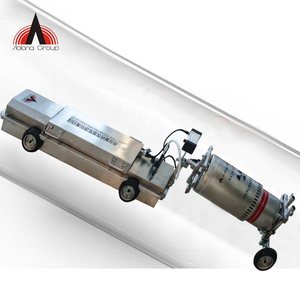Understanding the Principles of Pipe Welding Assessment: Vital Aspects for Examining Weld Quality and Preventing Failures
In the world of pipe welding evaluation, the stakes are unquestionably high, necessitating a comprehensive understanding of fundamental concepts to make sure weld quality and mitigate failing dangers. Various essential aspects come into play, including the option of appropriate materials, the application of advanced assessment methods, and the acknowledgment of common welding defects. In addition, adherence to regulative standards plays an essential role in keeping system stability. Yet, the intricacies intrinsic in these procedures increase important concerns about finest practices and arising modern technologies that might redefine inspection protocols-- concerns that warrant additional exploration.
Relevance of Weld Quality
The stability of a pipe is basically dependent on the quality of its welds, making weld quality an important consider guaranteeing risk-free and reliable procedure. A pipe weld acts as a junction factor where materials are joined, and any kind of shortages in this area can cause considerable structural weaknesses. Poor bonded quality can lead to leakages, ruptures, and devastating failures, positioning severe security dangers and environmental dangers.
A number of elements add to the quality of a weld, including the choice of welding procedure, the abilities of the welder, and the problems under which the welding is carried out - Pipeline Welding Inspection. Inadequate preparation, improper warm input, and contamination can jeopardize weld stability, resulting in issues such as porosity, incomplete combination, or fractures. As a result, rigid quality assurance procedures should be executed throughout the welding process to minimize these risks
Additionally, the lasting efficiency of a pipeline is heavily affected by the longevity of its welds. Top notch welds not only enhance the total stamina of the pipeline yet likewise extend its solution life, minimizing the need for pricey repair work and downtime. Hence, making certain premium weld high quality is paramount in pipe design and upkeep practices.
Trick Evaluation Strategies
Making sure weld quality demands the implementation of reliable evaluation strategies to determine possible problems prior to they result in failings. Pipeline Welding Inspection. Among one of the most commonly made use of methods are aesthetic inspection, radiographic testing (RT), ultrasonic screening (UT), and magnetic particle testing (MT) Each technique serves a distinctive purpose and is selected based upon the specific demands of the pipe job
Aesthetic inspection is the initial line of defense, permitting inspectors to examine surface area problems, placement, and overall handiwork. Radiographic testing supplies a thorough sight of inner weld honesty by utilizing X-rays or gamma rays to discover subsurface imperfections.
Ultrasonic screening employs high-frequency acoustic waves to assess the thickness and honesty of welds, making it ideal for identifying internal suspensions. Magnetic particle testing is a reliable approach for determining surface area and near-surface defects on ferromagnetic materials by using electromagnetic fields and fine ferrous fragments. By making use of these key inspection strategies, pipe welding examiners can make certain the finest requirements are maintained, eventually leading to more secure and much more dependable pipeline systems.
Typical Welding Flaws
In the realm of pipe welding, understanding common welding problems is critical for maintaining structural stability and safety. These problems can lead to catastrophic failures otherwise determined and attended to immediately. Amongst one of the most widespread problems are porosity, which takes place when gas entraps in click here for more the weld metal, creating voids that compromise the joint. Another considerable problem is absence of blend, where the weld metal does not effectively bond with the base material, jeopardizing the joint's toughness.

Splits are likewise a critical worry, showing up in different forms such as warm cracks, chilly cracks, and root fractures. Each kind poses unique obstacles and calls for details evaluation methods for discovery. Undercut is an additional issue that can decrease the weld's cross-sectional area, resulting in stress focus factors, while slag inclusion occurs when non-metallic material comes to be entraped in the weld pool, detrimentally impacting the mechanical residential or commercial properties of the weld.
In addition, incorrect grain form can result in irregular anxiety circulation. Recognizing these common problems is vital for examiners and welders alike, as very early detection and adjustment are crucial to guaranteeing the durability and reliability of pipe systems.

Products and Their Influence
Choosing the appropriate materials for pipeline welding considerably influences the total performance and dependability of the welded joints. The selection of base steels, filler materials, and finishings plays a crucial function in figuring out the strength, deterioration resistance, and resilience of the welds. For example, carbon steel is typically utilized for its balance of stamina and price, but it might be prone to deterioration in particular environments, requiring the usage of protective finishings or corrosion-resistant alloys.
Furthermore, different metal welding calls for cautious factor to consider of thermal expansion buildings and prospective galvanic deterioration. The compatibility of materials can greatly affect the microstructure of the weld, causing variants in mechanical residential or commercial properties. For instance, stainless steel supplies exceptional deterioration resistance however might require specific filler products to make certain an audio weld joint.
Additionally, the impact of temperature level and environmental problems on material choice can not be taken too lightly. High-strength steels might shed ductility at elevated temperatures, while low-temperature applications could require materials with improved toughness. Ultimately, comprehending the ramifications of material selections is important for achieving ideal weld top quality and stopping failures in pipe systems.

Regulative Standards and Compliance
Governing standards and conformity play a crucial role in pipe welding, developing the framework within which safe and reliable practices are maintained. These standards are established by various organizations, consisting of the American Culture of Mechanical Engineers (ASME), the American Welding Society (AWS), and the Pipe and Hazardous Products Security Administration (PHMSA) Following these browse this site regulations makes sure that welding procedures satisfy the needed top quality and safety standards.
Conformity with regulative requirements is vital not just for guaranteeing the integrity of the welds yet additionally for securing the environment and public safety. Examiners are entrusted with verifying that welding operations adhere to these requirements through extensive exams of both the processes and the last welds. This involves evaluating welder qualifications, welding procedures, and the materials used.
Failing to follow well-known policies can bring about substantial consequences, including pricey fixings, legal liabilities, and tragic failures. For that reason, organizations need to incorporate conformity right into their operational practices, cultivating a society of safety and high quality. Normal training and audits are useful reference critical elements in keeping adherence to these regulatory requirements, guaranteeing that all personnel are educated and outfitted to maintain the greatest levels of pipeline welding high quality.
Final Thought
In verdict, an extensive understanding of pipe welding assessment is crucial for ensuring weld top quality and avoiding failures. By using essential assessment methods and acknowledging typical welding defects, examiners can effectively examine the stability of welds. Factor to consider of product choice and adherence to regulatory requirements better boost the reliability and safety and security of pipe systems. Eventually, these practices contribute to the prevention of leaks and catastrophic failures, emphasizing the crucial importance of rigorous examination procedures in pipe construction and upkeep.
In the world of pipeline welding evaluation, the stakes are indisputably high, demanding a comprehensive understanding of basic principles to ensure weld high quality and mitigate failing risks (Pipeline Welding Inspection).The stability of a pipe is basically reliant on the quality of its welds, making weld high quality an important variable in making certain efficient and safe procedure.Numerous factors contribute to the quality of a weld, consisting of the choice of welding procedure, the abilities of the welder, and the conditions under which the welding is carried out. Undercut is an additional problem that can lower the weld's cross-sectional location, leading to stress and anxiety focus points, while slag incorporation takes place when non-metallic material comes to be entraped in the weld swimming pool, adversely influencing the mechanical residential or commercial properties of the weld
In final thought, a detailed understanding of pipe welding assessment is important for making certain weld top quality and preventing failings.